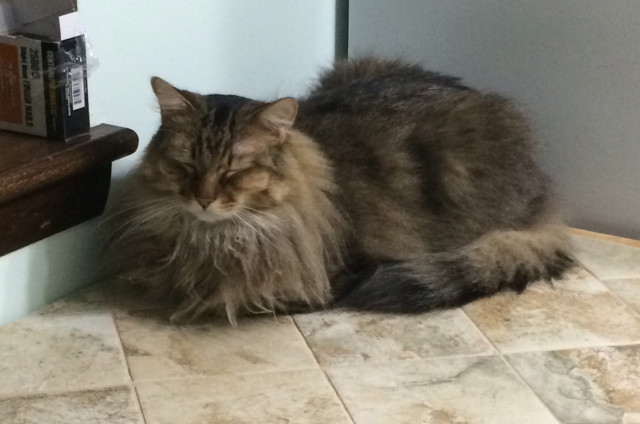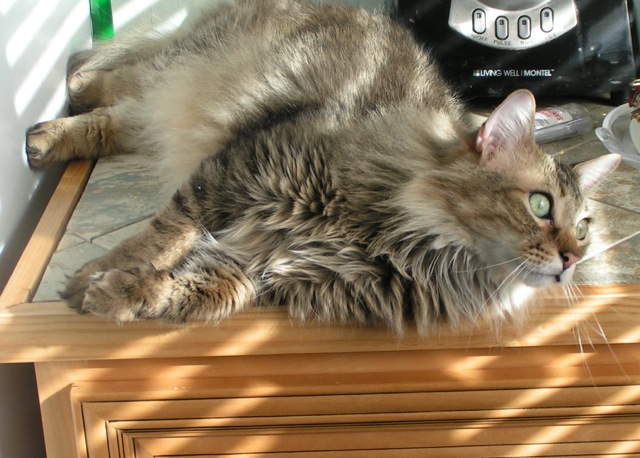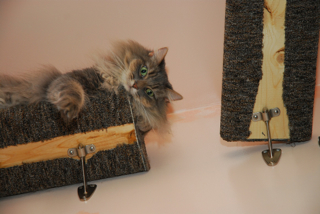Note: This is republished from Pawsitive Pet Parenting
A lot of our problems with cats stem from the fact that they’re hard to train. When we try discipline and punishment, we usually succeed in just making them afraid of us. Then, we come home from work to find new claw marks on the sofa, or more things knocked off the table or counters. Now what? What all is involved in training your cat?
One of the best methods for training your cat is to let your cat’s environment do the talking as much as possible. Basically, you want to make your furniture, or your counters, places your cat just doesn’t want to be. For instance, you could put crinkled aluminum foil on tabletops and counters. The next time your cat jumps up there, the foil will feel strange and crunch loudly, startling her. You’re nowhere around; she doesn’t associate this unpleasant experience with you. She associates it with the environment, and makes her want to avoid it.
You can also use double-sided tape when training your cat not to scratch your furniture. Cats really don’t like touching very sticky surfaces like that, and this can help them to stop using your sofa as a scratching post. Here, too, you’re having the environment provide the negative experience.
But this isn’t quite enough; your cat has natural instincts that she can’t just turn off. Those instincts involve scratching, exploring, and climbing. Training your cat to stay where you want means you must be available to not only show your cat acceptable outlets for her instincts, but provide the positive reinforcement that will encourage her to use them.
The first thing you should do is buy or build cat trees and cat shelves. KatWallks has a great selection of shelves and perches for your cat, which gives her both vertical and horizontal territory, in your house. Shelves take up less space and can be more versatile than cat trees, because you don’t need an elaborate set-up to give your cat a variety of high perches.
Cat trees, on the other hand, might be easier for you, and they’re definitely better for window perches because you can put more perches in front of fewer windows. Cat trees also often come with built in scratching posts.
Ultimately, how you provide vertical territory and acceptable scratching surfaces depends on what works best for your house and your situation. Training your cat to use these in place of counters, tables, and sofas, means putting treats on some of them, and giving your cat a trail of treats to follow. Then let her explore. She’ll associate the treats with the climbing surfaces, and develop positive associations.
Training your cat this way also requires gentle affection, such as praise, and strokes or scratches, on her favorite places, when she goes where you want her to. This will let her know that you consider these acceptable places for her to climb, scratch, and lounge to her heart’s content. This, in turn, will help to reduce her stress and maintain harmony in your home.





Well, maybe. My two Tuxedos, 6 lb lil lizzie and 17 lb Sebastian go anywhere they want any time they want. No problem, but Sebastian claws the big stuffed chairs – tape doesn’t work – and lizzie will climb my shirts in the closet and walk across the hangers. She also likes pulling open dresser drawers and hook my shirts with a claw. In one night, she shredded two t-shirts and a sweater vest!!!! Love them both dearly….
Yikes. Maybe, for the sofa, something besides sticky tape, like something that has a distasteful smell so they don’t even want to come near (but is non-toxic in case they decide they want to lick it). Bitter apple, maybe?